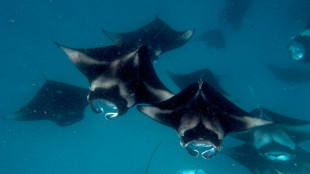
-
 Hong Kong leader says independent committee to probe fire
Hong Kong leader says independent committee to probe fire
-
How deforestation turbocharged Indonesia's deadly floods

-
 New Zealand 231-9 as 'old school' West Indies exploit pace-friendly wicket
New Zealand 231-9 as 'old school' West Indies exploit pace-friendly wicket
-
England spinner Jacks replaces injured Wood for second Ashes Test

-
 Pope Leo to hold Beirut mass, visit port blast site
Pope Leo to hold Beirut mass, visit port blast site
-
Australia opener Khawaja out of second Ashes Test with injury

-
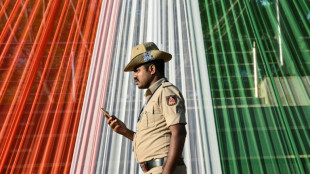 Concern as India orders phone manufacturers to preload govt app
Concern as India orders phone manufacturers to preload govt app
-
French talent Kroupi 'ready to suffer' to realise Premier League dream

-
 New Zealand 231-9 as West Indies exploit bowler-friendly wicket
New Zealand 231-9 as West Indies exploit bowler-friendly wicket
-
US Republicans sweat toss-up election in traditional stronghold

-
 'Rescued my soul': Hong Kong firefighters save beloved pets
'Rescued my soul': Hong Kong firefighters save beloved pets
-
Suns eclipse shoddy Lakers, Mavs upset Nuggets

-
 Seven footballers in Malaysia eligibility scandal 'victims': union
Seven footballers in Malaysia eligibility scandal 'victims': union
-
Patriots on brink of playoffs after Giants rout

-
 Survivors, families seek answers to deadly Hong Kong ferry disaster
Survivors, families seek answers to deadly Hong Kong ferry disaster
-
Race to get aid to Asia flood survivors as toll nears 1,200

-
 Rugby World Cup draw: who, how and when?
Rugby World Cup draw: who, how and when?
-
Williamson falls for 52 as NZ reach 128-5 in West Indies Test

-
 Hong Kong leader announces 'independent committee' to probe fire
Hong Kong leader announces 'independent committee' to probe fire
-
South Korean leader calls for penalties over e-commerce data leak

-
 Samsung unveils first 'special edition' triple-folding phone
Samsung unveils first 'special edition' triple-folding phone
-
Apple AI chief leaving as iPhone maker plays catch-up

-
 Asian markets rise as US rate cut bets temper Japan bond unease
Asian markets rise as US rate cut bets temper Japan bond unease
-
Weight of history against England in pink-ball Gabba Ashes Test

-
 How South Korea's brief martial law upended lives
How South Korea's brief martial law upended lives
-
VR headsets take war-scarred children to world away from Gaza
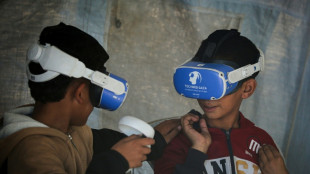
-
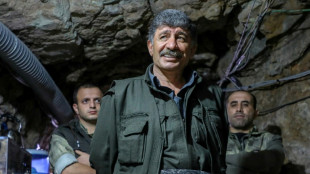 'We chose it': PKK fighters cherish life in Iraq's mountains
'We chose it': PKK fighters cherish life in Iraq's mountains
-
US envoy to meet Russia's Putin for talks on ending Ukraine war

-
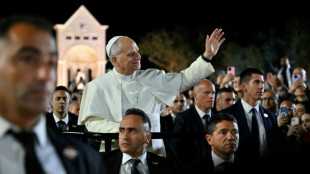 Pope Leo holds Beirut mass and visits site of port blast
Pope Leo holds Beirut mass and visits site of port blast
-
'Quad God' Malinin ramps up Olympic preparations at Grand Prix Final

-
 New Zealand 17-1 at lunch in rain-hit West Indies Test
New Zealand 17-1 at lunch in rain-hit West Indies Test
-
Pacific island office enabling sanctions-busting 'shadow fleets'

-
 White House gets scaled-down Christmas display amid ballroom work
White House gets scaled-down Christmas display amid ballroom work
-
GEN Announces New Positive Phase 1 Trial Data of the Investigational Drug SUL-238 for Alzheimer's and Other Neurodegenerative Diseases

-
 White House confirms admiral ordered 2nd strike on alleged drug boat
White House confirms admiral ordered 2nd strike on alleged drug boat
-
Nigeria's defence minister resigns amid security crisis: presidency

-
 From Honduras to Poland, Trump meddles in elections as never before
From Honduras to Poland, Trump meddles in elections as never before
-
Trump holds Venezuela meeting as Maduro rejects 'slave's peace'

-
 12 dead, dozens missing as landslide submerges boats in Peru port
12 dead, dozens missing as landslide submerges boats in Peru port
-
Vardy's first Serie A double fires Cremonese past high-flying Bologna

-
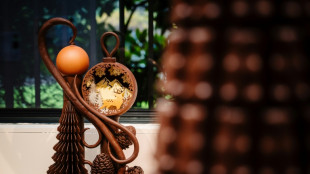 Rich art: French pastry chefs auction chocolate sculptures
Rich art: French pastry chefs auction chocolate sculptures
-
Cameroon sack coach Brys, drop goalkeeper Onana for AFCON

-
 Son of Mexican crime lord 'El Chapo' pleads guilty in drug case: US media
Son of Mexican crime lord 'El Chapo' pleads guilty in drug case: US media
-
Right-wing rivals for Honduras presidency in 'technical tie'

-
 US upbeat on pushing Ukraine deal as envoy heads to Russia
US upbeat on pushing Ukraine deal as envoy heads to Russia
-
European rocket puts S.Korean satellite in orbit

-
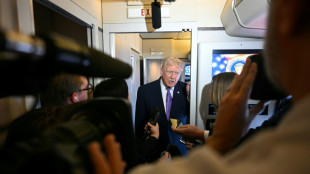 Trump to meet top national security team on Venezuela
Trump to meet top national security team on Venezuela
-
US Supreme Court hears major online music piracy case

-
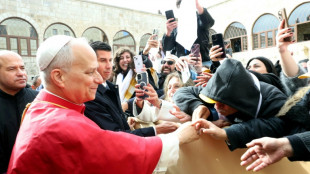 Pope gets rockstar welcome as he delivers message of hope to Lebanese youth
Pope gets rockstar welcome as he delivers message of hope to Lebanese youth
-
Iran sentences director Jafar Panahi to year in prison: lawyer

| RBGPF | 1.54% | 79 | $ | |
| RYCEF | -2.68% | 13.83 | $ | |
| SCS | 0.55% | 16.38 | $ | |
| CMSC | -0.39% | 23.32 | $ | |
| CMSD | -0.13% | 23.29 | $ | |
| VOD | -2.8% | 12.13 | $ | |
| NGG | -0.61% | 75.65 | $ | |
| BTI | -0.91% | 58.13 | $ | |
| GSK | -1.42% | 47.19 | $ | |
| RIO | 0.03% | 71.97 | $ | |
| RELX | -1.23% | 39.72 | $ | |
| BCC | -1.18% | 75.13 | $ | |
| BCE | -0.09% | 23.49 | $ | |
| JRI | -0.15% | 13.78 | $ | |
| AZN | -2.44% | 90.52 | $ | |
| BP | 1.12% | 36.51 | $ |

France's military pigeons race in memory of brave predecessors
These days, French military pigeon number 193-529 is no longer needed to carry tiny messages during war-time communication blackouts.
But the racing bird serves as a reminder of the brave service of its predecessors in World Wars I and II, and the 1870 siege of Paris.
Inside Europe's last military pigeon loft, Sergeant Sylvain cradled 193-529, an alert feathered athlete with an iridescent green neck.
"He's a carrier pigeon, like the ones who served in World Wars I and II," said Sylvain, withholding his surname for security purposes.
"But today he races," added the member of the armed forces, whose grandfather was also a pigeon fancier.
In Mont Valerien outside Paris, Sylvain flits between dovecotes, tending to some 200 pigeons -- cleaning their shelters and making sure they have enough to eat.
These days, they only use their navigating skills when they are released during competitions, military ceremonies, or demonstrations for visitors, he said.
Humans have been using homing pigeons since Antiquity, but the French military started using them as a communication tool during the Franco-Prussian war of 1870 after the Prussians besieged Paris.
In October that year, the interior minister boarded a hot-air balloon to flee the French capital.
Around a month later, the French military had elaborated a messenger pigeon plan to communicate with people still in the city, according to a French government account.
- 'Pigeongrams' -
Patriotic Parisians donated more than 300 pigeons to the war effort, which were loaded into the wicker baskets of hot-air balloons and transported southwards to the city of Tours.
Upon arrival they were fitted with small tubes containing 3 to 4 cm (1 to 1.5 inch) of microfilm on which minute messages had been inscribed, called "pigeongrams".
They were then released as close to the capital as possible so they could carry them back inside.
Only around 50 pigeons made it.
Parisians who found the pigeons then placed the microfilm between sheets of glass and, using a magic lantern -- an early type of image projector, projected it onto a large screen to read it.
They transcribed the contents and delivered the message to its intended recipient.
During the two world wars, pigeons were used again when "modern means of communication reached their limits", such as "bombardments ripping down telephone lines", Sylvain said.
During World War II, a French pigeon helped alert Allies that six German U-boats were undergoing maintenance in the French port of Bordeaux, leading to aerial raids that destroyed four of them, Sylvain said.
The pigeon, nicknamed "Maquisard" like some members of the French Resistance, received an award.
- Old training manuals -
A British pigeon too made headlines.
Gustav, a homing pigeon in the British Royal Air Force, travelled 240 km (150 miles) back across the Channel to break the first news of the D-Day landings in June 1944, according to the Imperial War Museum.
He carried a message from a war correspondent, and was also awarded a medal.
The French military last relied on homing pigeons during the war in Algeria from 1954 to 1962 that led to the North African country's independence from France.
In 1961, the French armed forces ended the messenger pigeon programme.
Sylvain said the military continued to train the birds for a while, fearing an electromagnetic attack would bring down communications.
But today there is no longer such a risk, he said, with the military having set up specialised shields to protect its communications from any such attack.
Should the need for messenger pigeons however return, Sylvain says he is ready.
"I have all the training manuals from World War I right up to 1961," he said.
"It worked a century ago, so I don't see why it wouldn't again today."
R.Fischer--VB


